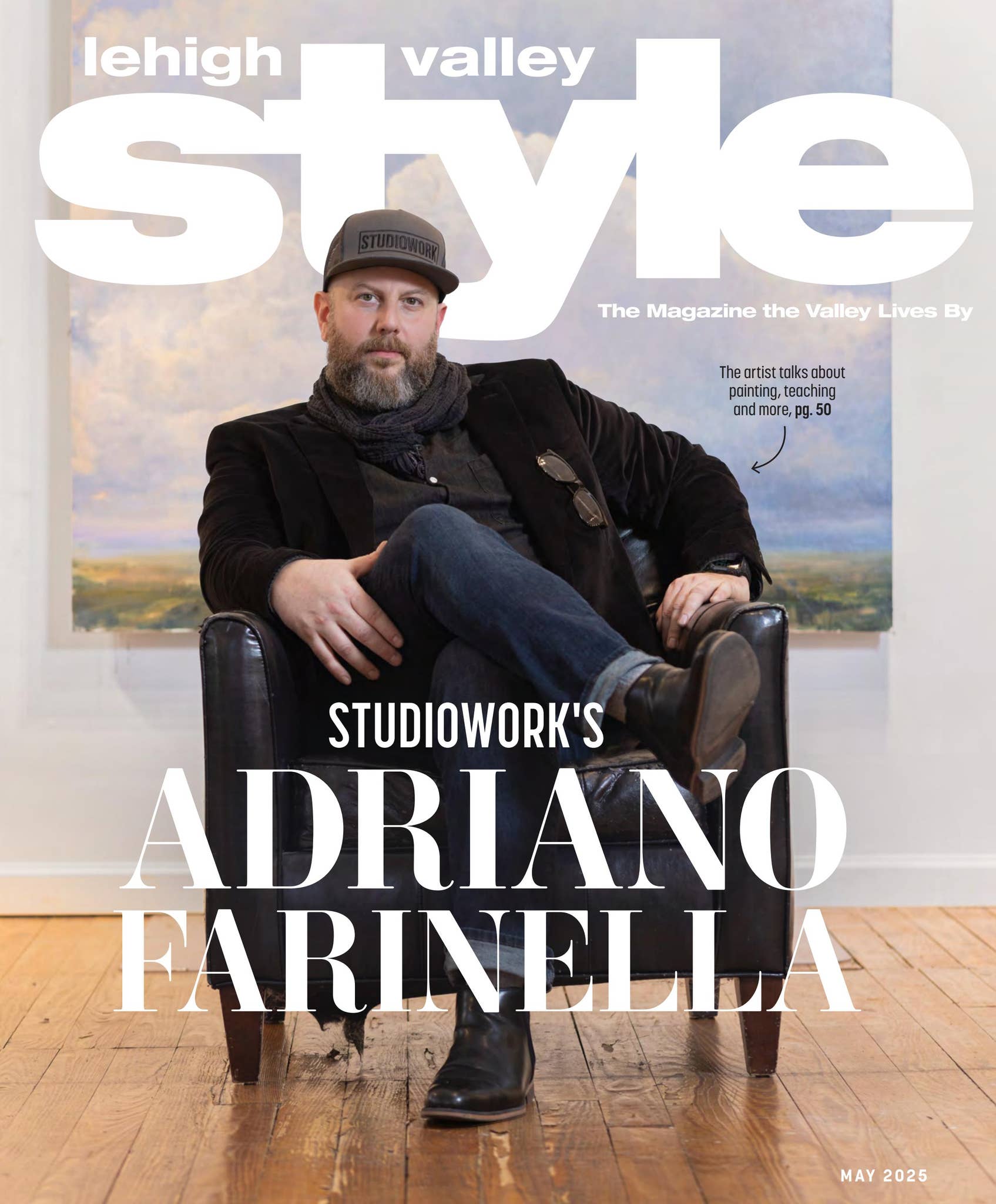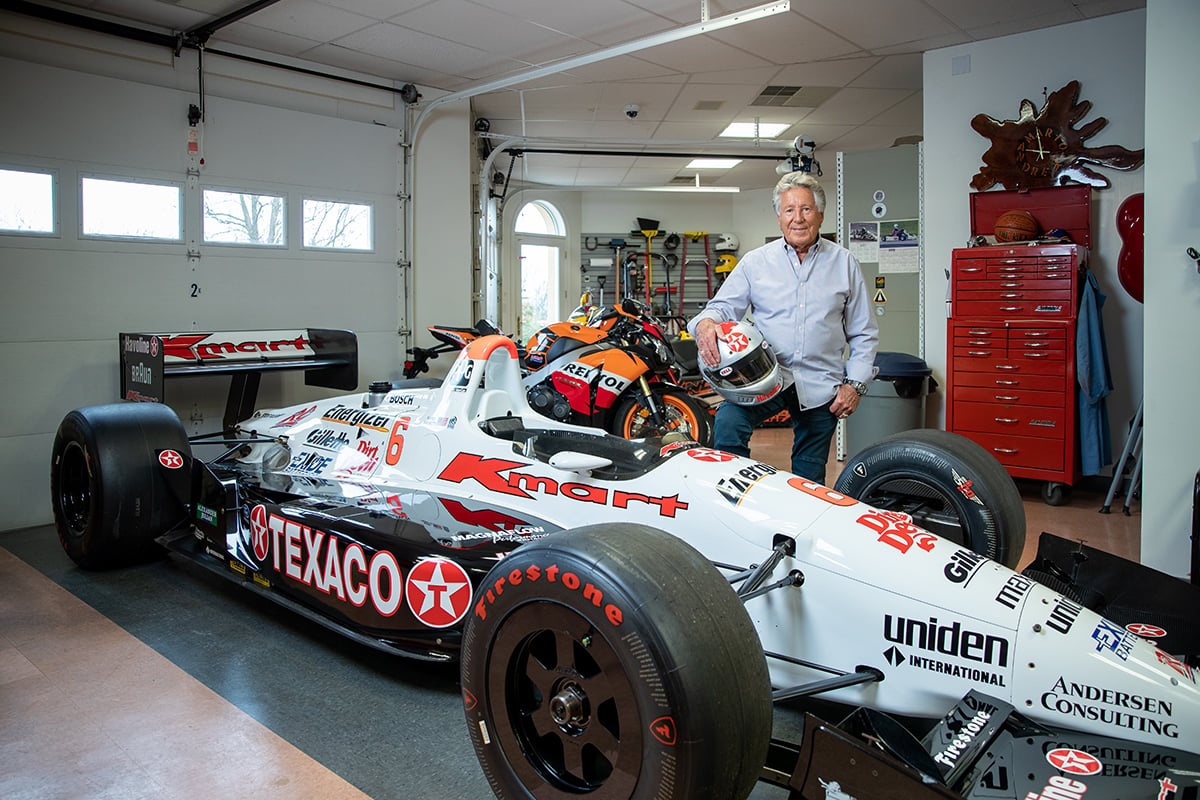
There's no passing in the Holland Tunnel. You have to stay in your lane. That's just the way it is. But tell that to a young Mario Andretti with something to prove to his parents. “My objective was, as soon as I got my driver's license, I wanted to show my parents I could drive in New York, so we went to New York,” he recalls. All was well until he tried to pull off that passing stunt. The car was promptly pulled over by a police officer as soon as the then 16-year-old Andretti and his family emerged from the tunnel. “I thought my dad was going to kill me.”
It wouldn't be the last time Andretti feared the wrath of his father. And it certainly wouldn't be the last time the future racing legend would pull a gutsy maneuver behind the steering wheel. By the time he was doing his best taxi driver impression in the Holland Tunnel, he already knew he wanted to make a career out of going fast.
You might say that Andretti got his first taste of the need for speed in Montona, Italy, the small hillside village where Andretti and his twin brother, Aldo, were born in 1940. (Editor's Note: Sadly, at the time of press, Aldo Andretti passed away at the age of 80.) Andretti says his father, Alvise Andretti, owned and operated several farms. His grandparents owned a small hotel with a restaurant, where his grandmother dazzled patrons with her exceptional cooking skills. But there was no refrigeration, so his mother, Rina Andretti, had to help his grandmother fetch goods from the butcher several times a day—it was a two-kilometer trek, up and down a hill. Meanwhile, Mario and Aldo couldn't help getting into some trouble here and there, as little boys do. Andretti recalls terrorizing the “old ladies” in the village with a homemade cart that resembled a wagon with no wheels—no wheels and, of course, no brakes. Combine that with cobblestone streets and hilly terrain, and it was inevitable that the brothers would navigate more than a few wild rides around their neighborhood.
But the tenor of the village began to change after World War II ended and Montona fell under Communist rule. Andretti says his family stayed put for a few years, hoping things would work out, but it gradually became clear that a change was needed. It was decision time: “Either stay and succumb to communism, hardline communism, or leave. And the choice was to leave.” Andretti was seven years old when he and his family, which also included older sister Anna Maria, moved to a refugee camp in Lucca. An uncle who had lived in the United States for many years told the family they should join him in Pennsylvania. Obtaining the necessary visastook three years. Andretti says at first, the move sounded like it might be temporary. “My dad broke out the news— ‘Well, I think we'll go to America. We'll see how things are and maybe we'll go back [to Italy].'”
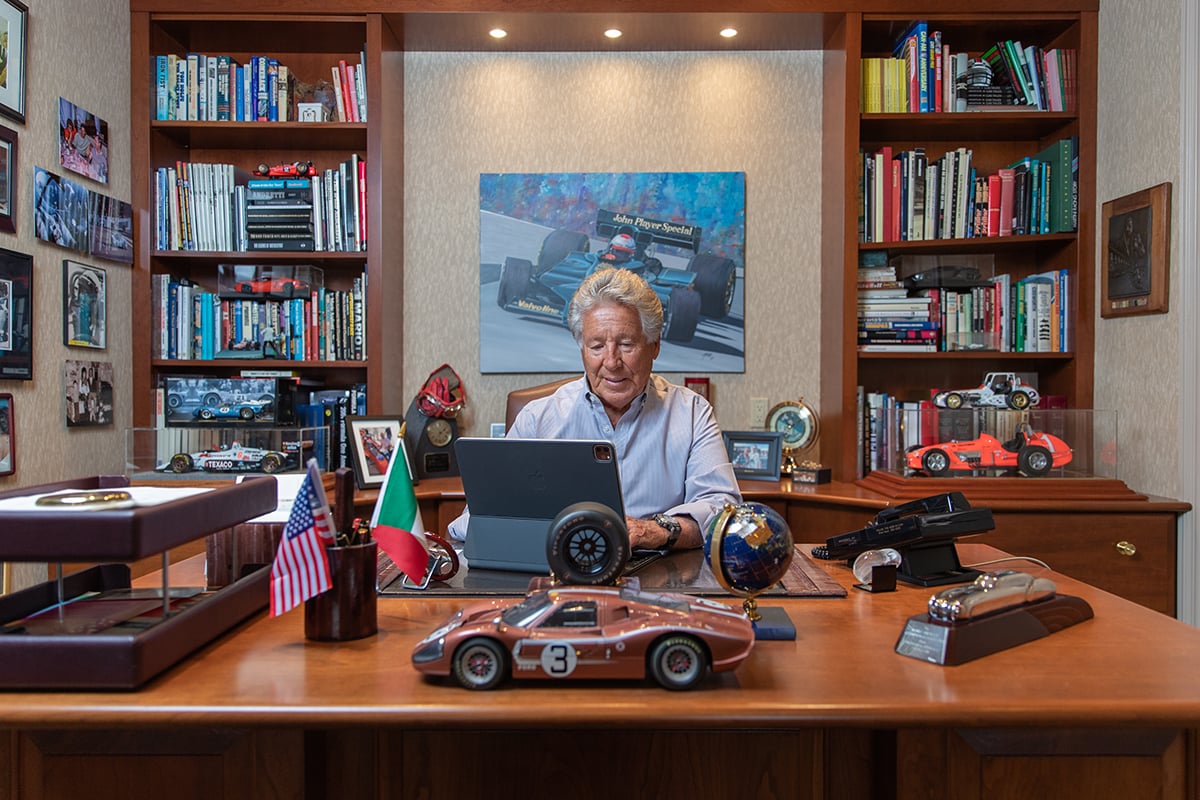
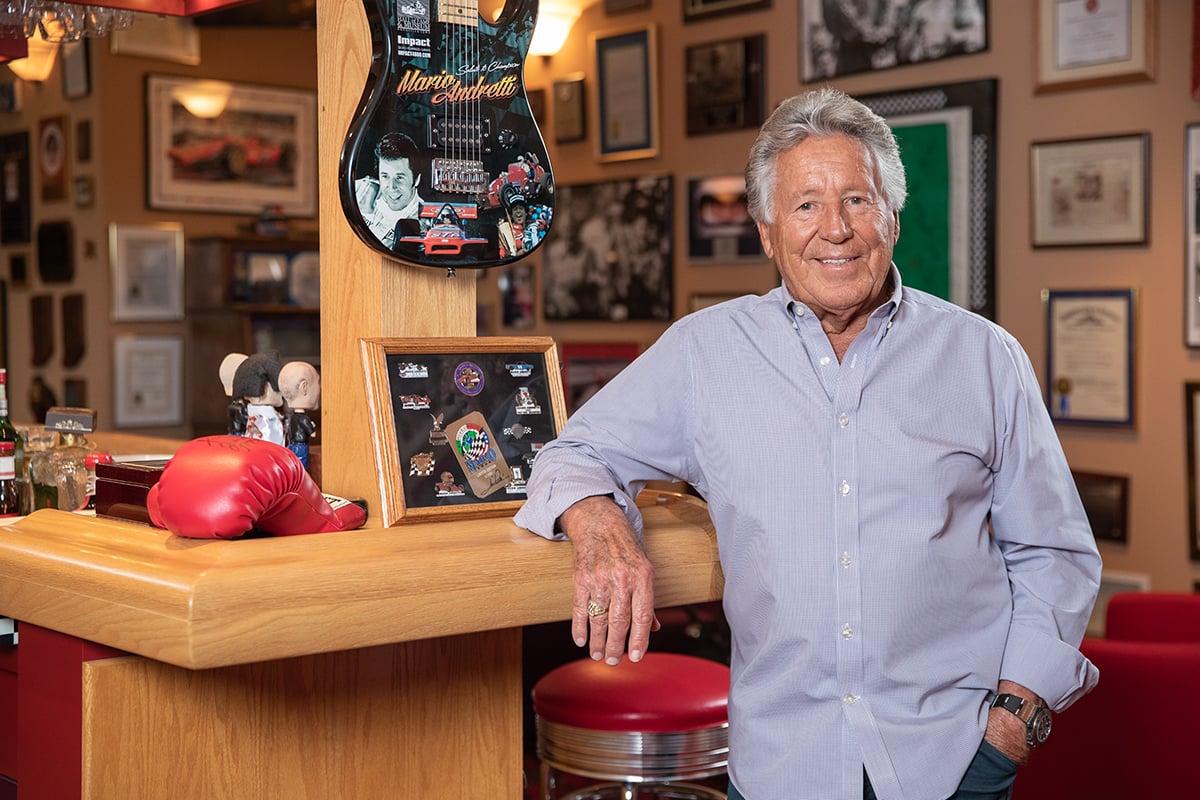
At that time, the 15-year-old Andretti had reason to hope he would be back home in Italy before long. Italy was the epicenter of motor racing. Andretti had seen his idol, world champion Alberto Ascari, race in the Italian Grand Prix in 1954. He recalls that moment as sealing the deal for him; he was going to be a race car driver. “The die was cast.”
The trip to America took 11 days on an Italian ocean liner. The family arrived in June of 1955—Anna Maria's twenty-first birthday. “It was a beautiful, clear morning,” says Andretti. “I'll never forget it.” They settled in Nazareth soon after, and any down-in-the-dumps feelings about leaving racing behind turned out to be fleeting for Andretti and his brother. They were lounging around on a Sunday when they heard a familiar rumble in the distance. “We just followed the noise,” says Andretti. “We peeked through the fence. We see the bright lights. We hear the big roar of the engines.” The brothers were at the Northampton County Agricultural Fairgrounds, a forerunner of Nazareth Speedway, and racing season was in full swing. “It was music to our ears,” Andretti says.
The brothers couldn't believe their good luck. Two years later, they assembled a team and began building a car of their own, and, at the age of 19 (they had to fudge their driver's licenses because professional drivers were supposed to be 21) they began entering their first contests. They didn't dare tell their father what they were up to. “In those days there were a lot of fatalities,” Andretti says. “All the negatives about racing were all over the news.” In fact, his idol, Alberto Ascari, had been killed in a crash in 1955. Despite the clandestine approach, the elder Andretti found out what his boys were doing, anyway, when Aldo was injured in a race at the end of that first season. Even so, the brothers weren't about to give it up. “He was protective,” says Andretti of his father. “He didn't understand how much passion we already had to pursue this. There was a lot of silence in the house, and my poor mother was caught in between.”
It would be another five years before Alvise Andretti finally relented and went to see his son race in person; Mario Andretti was making his IndyCar debut in Trenton, New Jersey, in 1964. “I finished eleventh,” says Andretti. “I thought it was pretty good. It was my first time in the car. [My father] was disappointed. He thought I should have won!”
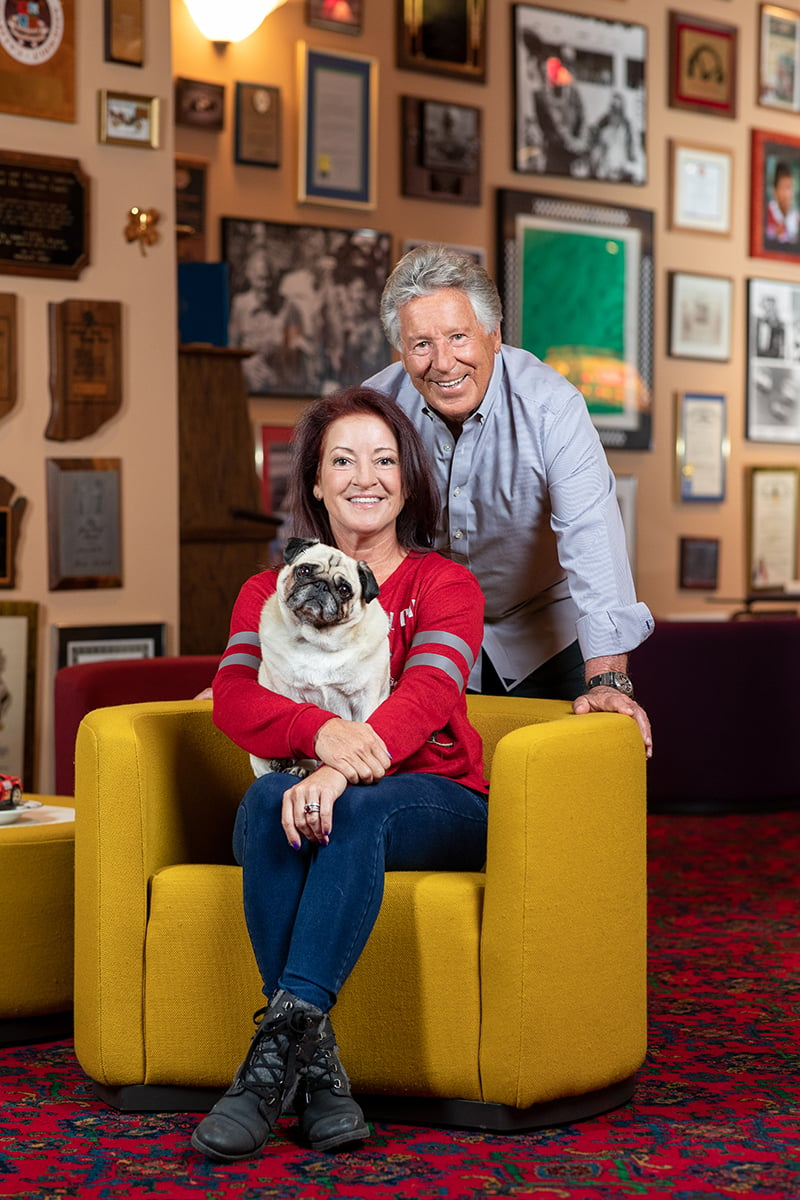
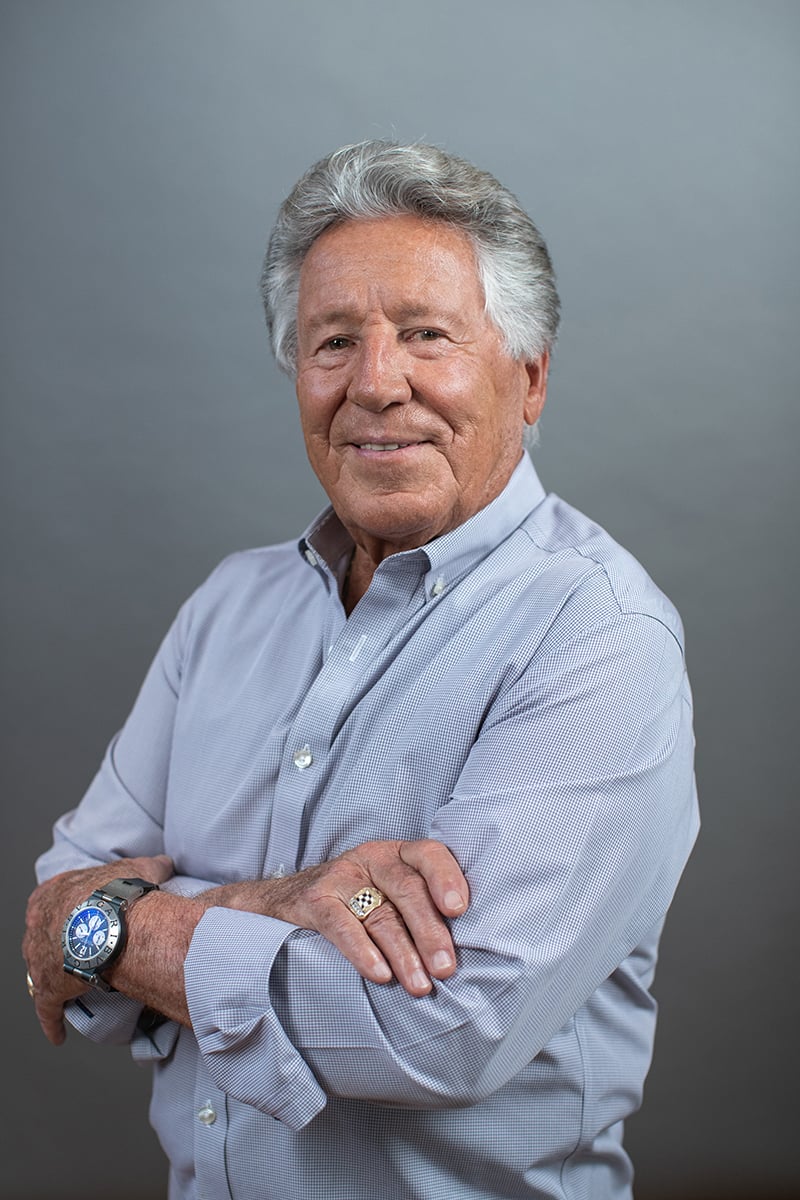
Of course, it's likely Mario Andretti would have kept right on racing, even without his father's blessing. And what a career it was, spanning four decades and six continents. He's one of only a few drivers to win races in Formula One, IndyCar, World Sportscar Championship and NASCAR. He saw the checkered flag 111 times. He was named the United States Driver of the Year in three separate decades, and the American Driver of the Century in 2000. He's been inducted into several halls of fame, including the International Motorsports Hall of Fame, the Automotive Hall of Fame and the Indianapolis Motor Speedway Hall of Fame.
There have been big moments off the track, too. Andretti officially became an American citizen in 1965. “There was no question that home for the rest of my life was America,” he explains. “I thought, if I'm going to be an American champion, I better be a citizen as well.” And it was the American flag that was emblazoned on the helmet he wore during his illustrious career. Of course, Italy has remained close to his heart as well; in 2006, Andretti was awarded the highest civilian honor given by the Italian government, the title of Commendatore. In 2016, he was made an honorary citizen of Lucca, where he spent seven years in a refugee camp as a boy.
And through it all, through the victories and the honors and the accolades, there was one person by his side—his wife, Dee Ann, who passed away in 2018. Mario says they initially became acquainted through school dances. They married in 1961, when she was 19 years old, and Mario was a 21-year-old newbie in the racing game. “She understood the volatility of that career,” he says. “I guess love supersedes reason in this case. She didn't have stars in her eyes. She just felt, that's what my calling was.” They had three children: sons, Michael and
Jeff, and daughter, Barbie. Michael and Jeff followed their father into racing. Altogether, there have been eight race car drivers in the Andretti family so far—four on Mario's side (including grandson Marco), and four on Aldo's. And Mario says sharing the track—and the winner's podium—with his family over the years has been one of the biggest joys of his career. “It's not just the championships, it's what we accomplished together. When I look back on the moments, that's what stands out.”

That's not to say the competitive fire didn't burn red hot among the Andretti men. In 1986, Mario bested Michael by less than a second at the finish line of the Budweiser Portland 200. Or, as Mario puts it: “I beat him by two inches!” It was Father's Day, by the way. In 1990, Michael turned the tables and beat his father by less than four seconds at Portland.
As his successes began to pile up, Mario Andretti could have moved his family to anywhere in the world. But he chose to keep his brood anchored in Nazareth, and that's where he remains to this day. “It has been suggested to me many times, ‘Why don't you move to California?'” he says. “It's never been attractive to me. There was never any desire to move elsewhere. I love this community. Dee Ann and I built our dream home here and that's where I'll be for the rest of my life.” The home, dubbed La Villa de Montona, is a sprawling estate in Bushkill Township that was built in the late '90s. Andretti also has a getaway near Lake Wallenpaupack; he says the late Paul Newman used to be a frequent guest. “He used to say, ‘I need to get a house like this,'” Andretti recalls.
Once he had both feet firmly outside the race car cockpit, Mario Andretti the sports champion became Mario Andretti the businessman. He's had a hand in several ventures over the years, including a winery and a petroleum company, both based in California. He's also worked with brands like Firestone, Honda, Texaco and AAA. During normal times (i.e., non-pandemic), Andretti would be on the road a lot. Instead, like so many other businessmen, he's had to adapt to stay-at-home orders and social distancing. He's conducting meetings and interviews via Zoom from his home; he's even finding time to work on his memoirs. “I pushed back on the idea for years. Now I kind of got talked into it,” he says.
The act of compiling the highs and lows that make up one's life story naturally sparks reflection. Andretti says, when he thinks about all that's transpired, he's thankful. And he encourages others to dare to dream, just like he did, as a boy in a different time, in a different land. “I'm as good an example of the American dream as can be out there. How blessed was I to have such a long career and dodge so many bullets along the way? I could not have wanted anything more.”







